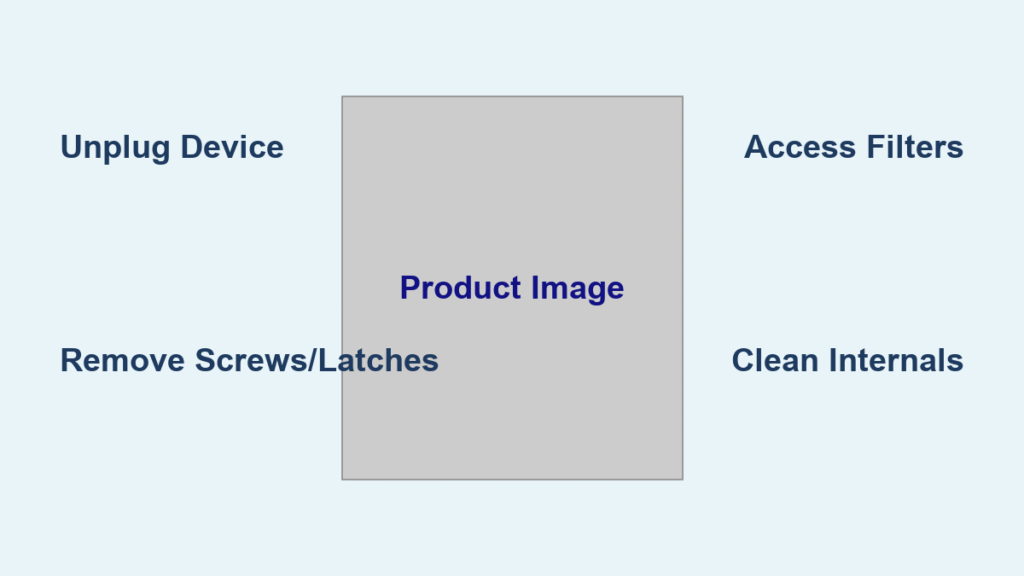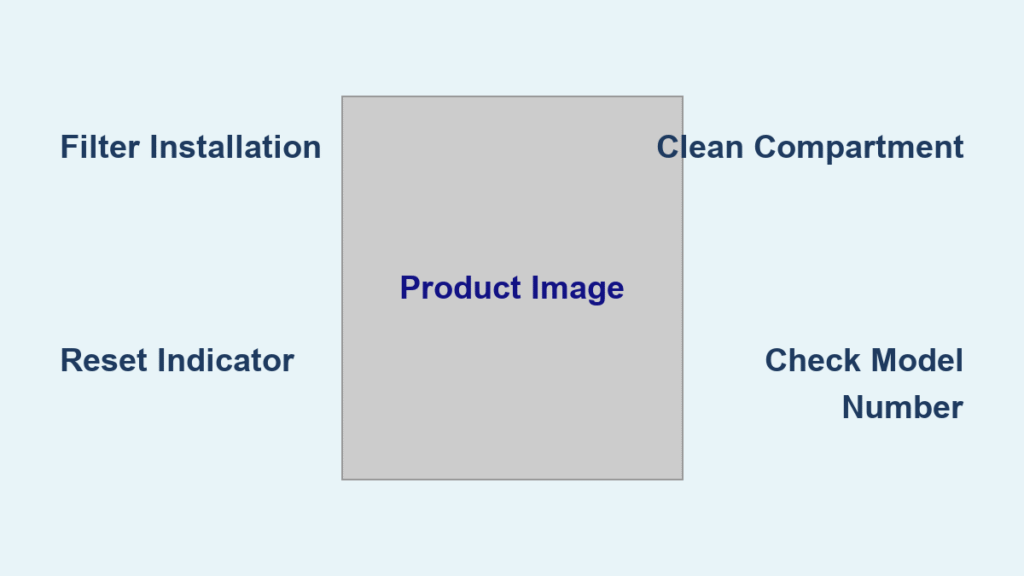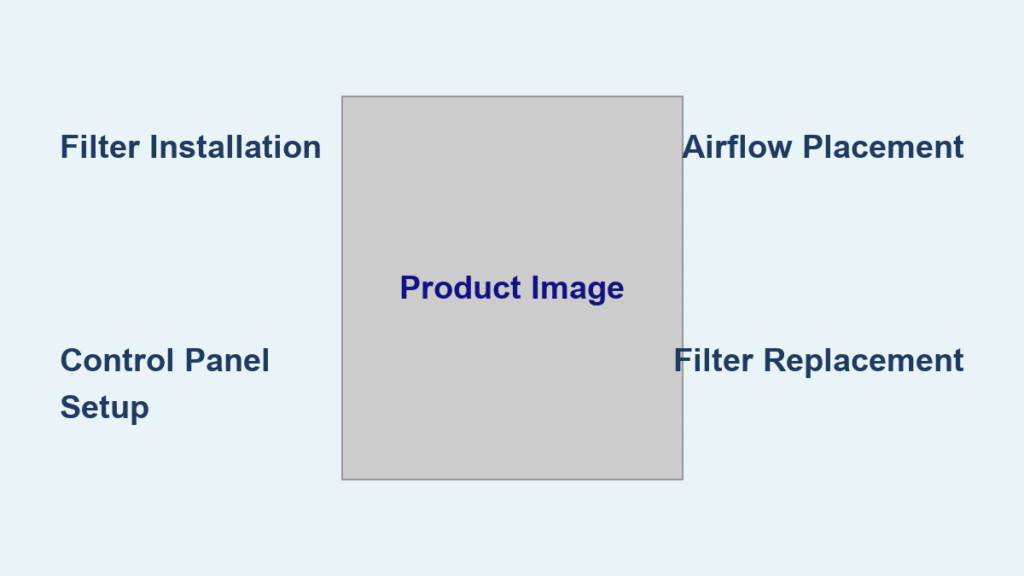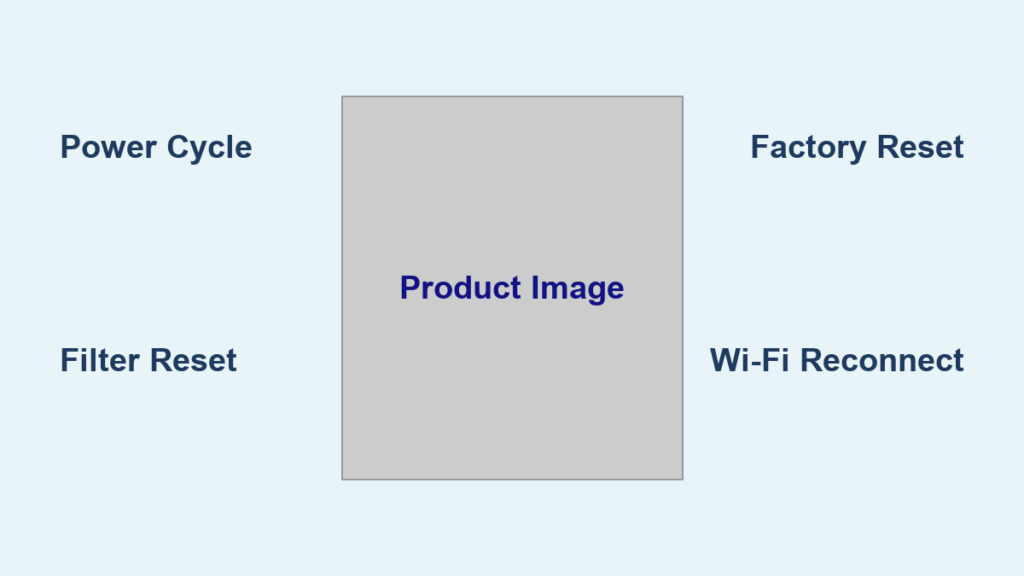Struggling to access the internals of your air purifier for a much-needed clean? You’re not alone—many users face this frustration when filters get clogged or the unit starts underperforming, leaving you breathing in less-than-fresh air. The good news is that learning how to open air purifier models is straightforward with the right steps, and a quick disassembly can restore peak performance in under 30 minutes. Whether it’s a Honeywell, Levoit, or Coway unit, this guide starts with a simple upfront solution: unplug the device, remove any visible screws or latches, and gently separate the housing.
In this comprehensive guide, we’ll go beyond the basics to cover everything from common reasons you need to open your air purifier, detailed step-by-step instructions tailored to popular models, safety precautions, and troubleshooting tips if things don’t go smoothly. By the end, you’ll have the confidence to maintain your device like a pro, preventing costly repairs and extending its lifespan. Stick with us, and you’ll never dread that “how to open air purifier” search again.
Why Regular Maintenance is Essential for Your Air Purifier
Air purifiers work tirelessly to capture dust, allergens, pet dander, and pollutants from your indoor air, but without regular access to their internals, they can become less effective over time. Opening your air purifier allows you to clean or replace filters, remove built-up debris, and inspect components for wear. According to the EPA, poor maintenance can reduce filtration efficiency by up to 50%, leading to poorer air quality and potential health issues like allergies or respiratory irritation. Important: Neglecting this can also void warranties or cause the motor to overheat, shortening the device’s life.
Beyond health benefits, proper maintenance saves money. A well-maintained air purifier uses less energy and lasts longer—many models are designed to run for 5-10 years with routine care. If you’ve noticed reduced airflow, unusual odors, or indicator lights flashing, it’s time to dive in. This guide focuses on safe, DIY methods to how to open air purifier units, ensuring you get the most out of your investment without professional help.
Recommended Frequency and Timing for Opening Your Air Purifier
To keep your air purifier running optimally, schedule maintenance based on usage, environment, and manufacturer guidelines. High-traffic homes with pets or smokers may need more frequent access, while light users can go longer between sessions. Always check your model’s manual for specifics, as frequencies vary— for instance, Levoit recommends filter checks every 2-3 months.
Here’s a handy maintenance schedule table to guide you:
| Frequency | Task | Duration | Best Time |
|---|---|---|---|
| Weekly | Wipe exterior and check for visible dust buildup | 5-10 minutes | After heavy use, like during allergy season |
| Monthly | Open air purifier to vacuum pre-filters and inspect main filters | 15-20 minutes | End of each month, or if airflow decreases |
| Every 3-6 Months | Full disassembly for deep cleaning or filter replacement | 20-30 minutes | Align with filter replacement cycles; spring and fall for seasonal prep |
| Annually | Thorough internal check for fan and sensor cleaning | 30-45 minutes | Before winter storage or after a year of use |
Warning: Avoid opening during operation or in humid conditions to prevent electrical hazards or moisture damage. Time your sessions when the unit is cool and unplugged.
Complete Process for How to Open Your Air Purifier
Opening an air purifier is model-specific, but the process generally involves unplugging, removing outer panels, and accessing the filter chamber. We’ll break it down into major steps, with variations for popular brands like Honeywell, Levoit, and Coway. This should take 10-30 minutes total. Gather tools first: screwdriver (Phillips or flathead), soft cloth, vacuum with brush attachment, and gloves for handling dusty parts.
Step 1: Preparation and Safety Setup
Before you start how to open air purifier, ensure a safe workspace. Place the unit on a flat, stable surface covered with a towel to catch debris. Unplug it from the power source to avoid shocks—electrical components inside can retain charge even when off.
- Safety Precautions: Wear gloves and a mask to avoid inhaling dust. Work in a well-ventilated area. If your model has a warranty, note that improper handling could void it, so consult the manual.
- Tool Preparation: Have your screwdriver ready. For touch-free models, check for release buttons.
- Area Cleaning: Clear nearby surfaces to prevent knocking over the unit.
Pro Tip: Take photos of the assembly before disassembly for easy reassembly.
Step 2: Removing the Outer Housing or Grill
Most air purifiers have a removable front or top grill for easy access. This is the simplest part of learning how to open air purifier.
For a general process:
1. Locate the release latches, tabs, or screws on the sides or back. Honeywell models often have clips on the sides—press and pull gently.
2. If screwed in (common on Coway units), use a screwdriver to loosen 2-4 screws counterclockwise. Set them aside safely.
3. Lift or slide off the grill. If it resists, check for hidden tabs underneath.
For Levoit models:
– Press the top release button and pull the front panel forward. No tools needed—it’s designed for quick access.
Time Estimate: 2-5 minutes. If stuck, apply gentle pressure; forcing it can crack plastic housings.
Step 3: Accessing and Removing Filters

Once the housing is off, you’ll see the filter compartment. This is where the magic happens for cleaning.
- Identify the pre-filter (washable mesh) and main HEPA or carbon filter. Slide or unclip them out—Levoit uses a simple pull-tab.
- For Honeywell: Twist the filter holder counterclockwise and lift out. Note any orientation arrows for reinsertion.
- Coway models may require pressing side buttons to eject the filter tray.
Warning: Handle filters carefully; they’re delicate and can release allergens. Vacuum loose dust immediately with a brush attachment—never rinse HEPA filters unless specified.
Troubleshooting if Stuck: If filters won’t budge, ensure no locking mechanism is engaged. For older models, lubricant like WD-40 (sparingly) can help, but test on a small area.
Step 4: Internal Cleaning and Inspection
With filters out, peer inside for deeper cleaning. This step is crucial for how to open air purifier beyond basics.
- Use a soft brush or compressed air to clean the fan blades and sensor areas. Avoid water unless the manual allows.
- Wipe internal surfaces with a damp microfiber cloth (dry thoroughly before reassembly).
- Inspect for damage: Cracked fans or loose wires mean it’s time for pro help.
Time Estimate: 10-15 minutes. Reassemble in reverse order, ensuring filters click securely.
Step 5: Reassembly and Testing
Snap everything back: Replace filters (align arrows), secure the housing, and plug in.
- Power on and run a test cycle—listen for unusual noises.
- Check indicator lights; reset if needed via the control panel.
- Monitor for 10 minutes to ensure proper airflow.
If it doesn’t seal properly, double-check screws or latches. Important: Run without filters briefly only for testing—prolonged use damages the unit.
Warning Signs That Indicate Immediate Attention Is Needed

Don’t wait for scheduled maintenance if your air purifier shows these red flags—open it ASAP to diagnose:
– Reduced suction or airflow: Clogged filters blocking intake.
– Strange smells or buzzing noises: Debris in the fan or motor strain.
– Frequent filter indicator lights: Even if not due for replacement.
– Visible dust escape: Poor sealing from wear.
– Overheating: Could signal internal blockages.
Addressing these promptly prevents bigger issues like motor failure, which can cost $100+ to repair.
Pro Tips for Mastering How to Open Air Purifier

Go beyond the basics with these expert insights to make maintenance effortless and effective:
– Customize for Your Model: Download the manual from the manufacturer’s site (e.g., levoit.com) for diagrams—search “[model] how to open air purifier” for videos.
– Use the Right Tools: Invest in a precision screwdriver set; magnetic tips prevent losing tiny screws.
– Avoid Common Mistakes: Never use harsh chemicals inside, as they can corrode sensors. Also, don’t over-tighten screws—hand-tight is best to avoid stripping.
– Optimize Performance: After opening, calibrate sensors if your model allows (via app or button reset) for accurate air quality readings.
– Eco-Friendly Cleaning: Opt for reusable pre-filters and recycle old HEPA ones through programs like those from the Air Filtration Association.
– Seasonal Tweaks: In pollen-heavy spring, open monthly; in winter, focus on humidity-related mold checks.
– Track Usage: Use a log or app to note opening dates, helping predict filter life and avoid surprises.
These tips can boost efficiency by 20-30%, per user reviews on sites like Consumer Reports.
When to Call in Professional Help
While DIY is empowering, some situations warrant a pro. Signs include: electrical issues (sparks or shorts), persistent noises after cleaning, or if your model is under warranty and you’ve voided it by opening. Complex units like whole-home systems (e.g., integrated HVAC purifiers) often need certified techs.
Look for providers via manufacturer referrals or sites like Angi—check reviews for air purifier specialists. Expect costs of $50-150 for a service call, plus parts. Always mention warranty details; many cover labor for the first year. If it’s a smart model, pros can update firmware too.
FAQ
Q: Is it safe to open my air purifier myself?
A: Yes, for most tabletop models like Levoit or Honeywell, as long as you unplug it first and follow the manual. Warning: Avoid if you’re uncomfortable with electronics or if the unit shows damage. Start with simple clip-based designs to build confidence.
Q: What if my air purifier model doesn’t have screws or latches?
A: Many modern units, like the Coway Airmega, use magnetic or push-button releases. Consult the user guide or search “[model] how to open air purifier” on YouTube for a visual demo—videos often show hidden mechanisms.
Q: Can opening the air purifier void the warranty?
A: It depends—basic cleaning access is usually allowed, but deep internals might not be. Check your warranty terms; brands like Dyson explicitly state that user maintenance is fine if done correctly. Keep receipts and photos as proof.
Q: How do I know if I need to replace filters after opening?
A: Inspect for tears, discoloration, or if they no longer trap dust effectively. Most last 6-12 months; use the built-in counter or app alerts. Replacement costs $20-60, but it’s cheaper than a new unit.
Q: What should I do if the housing cracks while opening?
A: Stop immediately and use painter’s tape for a temporary fix. Contact the manufacturer for a replacement part—cracks often indicate a defect. For future, apply even pressure and warm the plastic slightly with a hairdryer if rigid.
Q: Are there differences in how to open air purifier for different brands?
A: Absolutely—Honeywell uses side clips, Levoit has top tabs, and Blueair often requires bottom access. Always prioritize your model’s instructions to avoid damage.
Q: How often should I deep clean after opening?
A: Every 3-6 months, or more in dusty environments. After reassembly, run an empty cycle to clear residue.
Alternative Solutions If Opening Isn’t Feasible
If your air purifier is too complex or damaged to open safely, consider these options. They’re great backups when how to open air purifier proves tricky.
| Solution | Pros | Cons | Best For |
|---|---|---|---|
| Filter Subscription Service (e.g., from Amazon or manufacturer) | Auto-delivers replacements; no need to open often | Recurring cost ($20-50/shipment) | Busy users avoiding maintenance |
| Professional Cleaning Kit/Add-On | Includes tools and sprays for pros; extends life | Higher upfront cost ($30-100) | Older models with hard-to-access parts |
| Upgrade to Self-Cleaning Model (e.g., Dyson Purifier Cool) | Automatic UV or ionization cleaning; minimal opening | Expensive ($400+) | Tech-savvy homes wanting hands-off care |
| Portable Fan with Built-in Filter | Easier access design; no disassembly needed | Less powerful filtration | Small spaces or temporary fixes |
Compare based on your needs—self-cleaning units reduce opening frequency by 80%, but weigh the investment.
Keep Your Air Purifier Running Smoothly
With this guide, you’ve got the tools to master how to open air purifier and maintain crystal-clear air year-round:
– Essential preparation and safety steps
– Brand-specific disassembly processes
– Schedules and pro tips for long-term success
– When to seek alternatives or help
Following these actionable steps ensures your device performs at its best, reducing allergens and saving you time and money. Don’t let a sealed-up unit compromise your home’s air quality—tackle that opening today and breathe easier tomorrow.
Have you successfully opened your air purifier using these steps? Share your model and tips in the comments below to help fellow readers! If issues persist, describe them for personalized advice.

